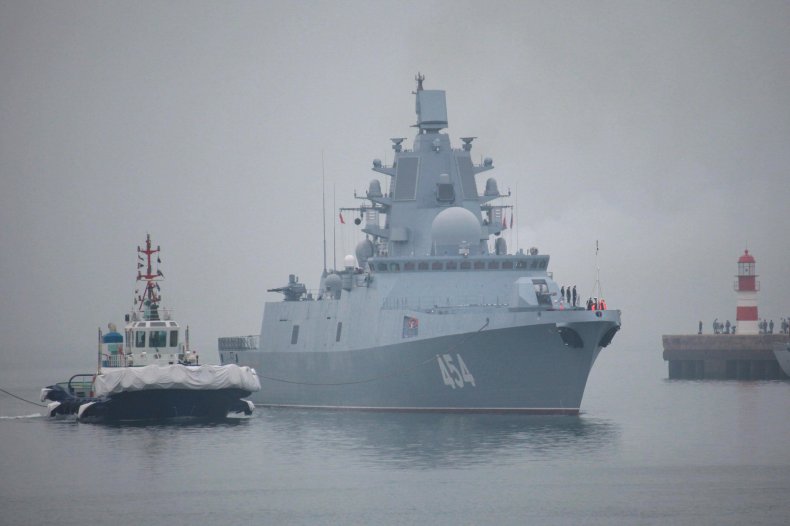Russia Plans New Hypersonic Missile Test Amid Arms Race With U.S., China
Russia's military has announced it will conduct a new hypersonic missile test in the Barents Sea as the world's great military powers push for the leading edge in weapons to define the future battlefield.
Russia's Northern Fleet—which operates in the Arctic and Atlantic oceans—announced Wednesday that its Admiral Gorshkov-class lead frigate, designated Project 22350, has deployed to the Arctic Barents Sea for tests of the Tsirkon hypersonic missiles, the state-run Tass news agency reported.
"The crew of the frigate Admiral Gorshkov has deployed to the Barents Sea where it will practice some elements of a combat training course and conduct firings from its missile and artillery weapons against sea targets," the Northern Fleet press office said. The frigate will then return to its home base in Severomorsk, close to the city of Murmansk in northwestern Russia.
Admiral Gorshkov was commissioned in 2018 and is the lead ship of its class, ten of which have been ordered for delivery by 2027. Tass said the ship is one of the most advanced in the Northern Fleet, and its tests of the Tsirkon hypersonic missile speak to its importance in the modernizing Russian navy.
The Admiral Gorshkov has already successfully conducted several test firings of the Tsirkon missile. The weapon is among Russia's hypersonic projects, of which two—the Avangard missile-launched hypersonic glide vehicle, and the air-launched Kinzhal hypersonic missile; both nuclear-capable—have already been deployed with troops.
Russia is competing with China and the U.S. for the leading edge in hypersonic research and deployment. Both Moscow and China have deployed hypersonic weapons with troops, while the U.S. is still developing its first two hypersonic projects.
The weapons could make existing missile defenses useless given their high speed—Mach 5 and above, or around 3,836 miles per hour—flatter trajectories, and ability to maneuver in-flight. These characteristics mean defenders have a smaller window in which to act and more difficult targets to hit.
The Tsirkon is a winged anti-ship cruise missile that may one day arm Russian surface vessels and submarines. President Vladimir Putin said in 2019 that the Tsirkon can reach speeds of up to Mach 9—6,905 miles per hour—with a range of 620 miles. Moscow is also working on a land-based version of the weapon.
The first Tsirkon test fire occurred in January 2020, launched from the Admiral Gorshkov in the Barents Sea and hitting a land target more than 310 miles away in the Northern Urals.
Russian Deputy Defense Minister Alexei Krivoruchko said in December that serial deliveries of the Tsirkon will begin in 2022. "Trials of a missile system with a Tsirkon hypersonic missile proceed successfully," Krivoruchko said, noting several successful tests in 2020 launched from the Admiral Gorshkov.


